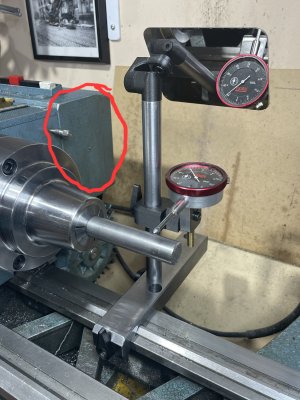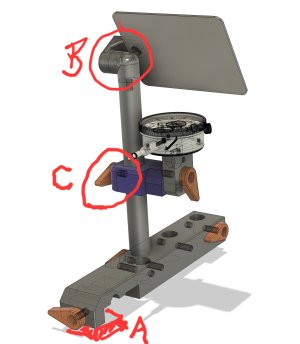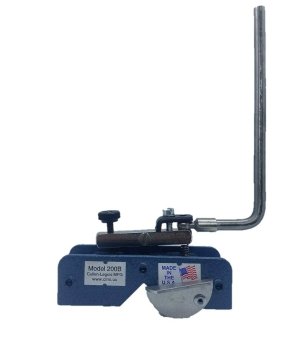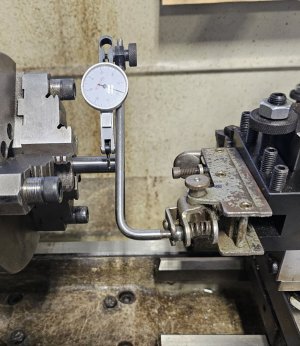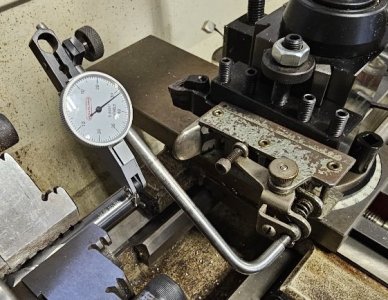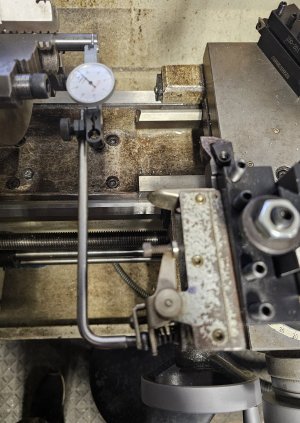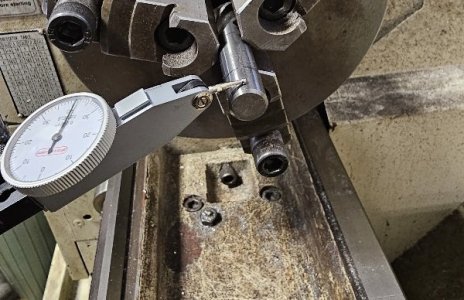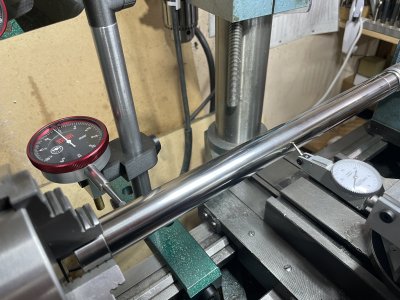Well that was another Tuit well spent.
While working on the Eureka relief tool, I was having all kinds of problems with the DTI mounted in one of those wobbly magnetic indicator stands, teetering on the edge of the ways. The solution was this rear mounted indicator stand, which is sturdy and rigid by comparison.
The base clamps across the way, and as you can see it is relieved to match the cross section. Before cutting metal, I measured the ways, sketched the profile and printed a 1mm thick pattern to test the fit.
The DTI mount allows tilt, swivel and height adjustment. The indicator mounts horizontally face up which is really awkward to see, so I made a swivel and mounted a small stainless steel mirror. Works like a charm.




While working on the Eureka relief tool, I was having all kinds of problems with the DTI mounted in one of those wobbly magnetic indicator stands, teetering on the edge of the ways. The solution was this rear mounted indicator stand, which is sturdy and rigid by comparison.
The base clamps across the way, and as you can see it is relieved to match the cross section. Before cutting metal, I measured the ways, sketched the profile and printed a 1mm thick pattern to test the fit.
The DTI mount allows tilt, swivel and height adjustment. The indicator mounts horizontally face up which is really awkward to see, so I made a swivel and mounted a small stainless steel mirror. Works like a charm.

